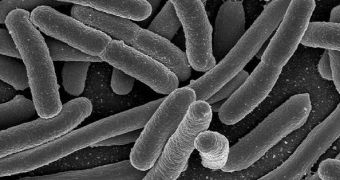In a series of three scientific papers that were all published in the top journal Science, experts reveal the fact that a huge degree of complexity appears to exist even in the most basic life forms. In their studies of the simplest bacteria, experts learned that a high level of complexity and organization formed the basis that allowed these microorganisms to live. This is puzzling, as researchers expected to find simpler and simpler hierarchies and organizations as they analyzed smaller and smaller creatures. This appears now not to be the case, as PhysOrg reports.
The new investigation also brought to light a very interesting fact about the microbiological world. In an interesting turn of events, it would now appear that prokaryotes are actually more similar to eukaryotes than anyone first believed. This is weird because the former class of organisms features no cell nucleus, whereas the other does. Experts seem to have had the basic understanding of life at the micro level all wrong, which is very bad. Without knowing how these organisms work, it is very difficult, for example, to develop new drugs and treatments against bacteria and microbes.
The new investigation was conducted in system biology, which is a relatively new branch in the field. It seeks to study the various levels at which a cell functions at the same time. Until now, the main approach has been to study all these levels separately. While the second approach is not wrong per se, it can be fraught with the risk of overlooking something. The research was conducted on the small bacteria Mycoplasma pneumoniae, which is responsible for causing atypical pneumonia in humans. It was found that, inside the microorganism, many enzymes and proteins seemed to serve dual functions, which was considered to be a hallmark of more complex organisms. This bacterium is a prokaryote.
In addition, when analyzing its transcriptome – the amount and types of RNA that contribute to copying the genetic information stored in DNA – M. pneumoniae proved to be a lot more similar to eukaryotes in makeup than anyone thought to be the case. Regardless, the organism is strong enough to survive on its own, and its genetic material is able to adapt to huge changes in its surrounding environment, so as to ensure survivability. This means that the bacteria can switch between food sources and can also adapt to many stress factors, the researchers behind the new paper, who are based at the European Molecular Biology Laboratory (EMBL), conclude.

 14 DAY TRIAL //
14 DAY TRIAL //